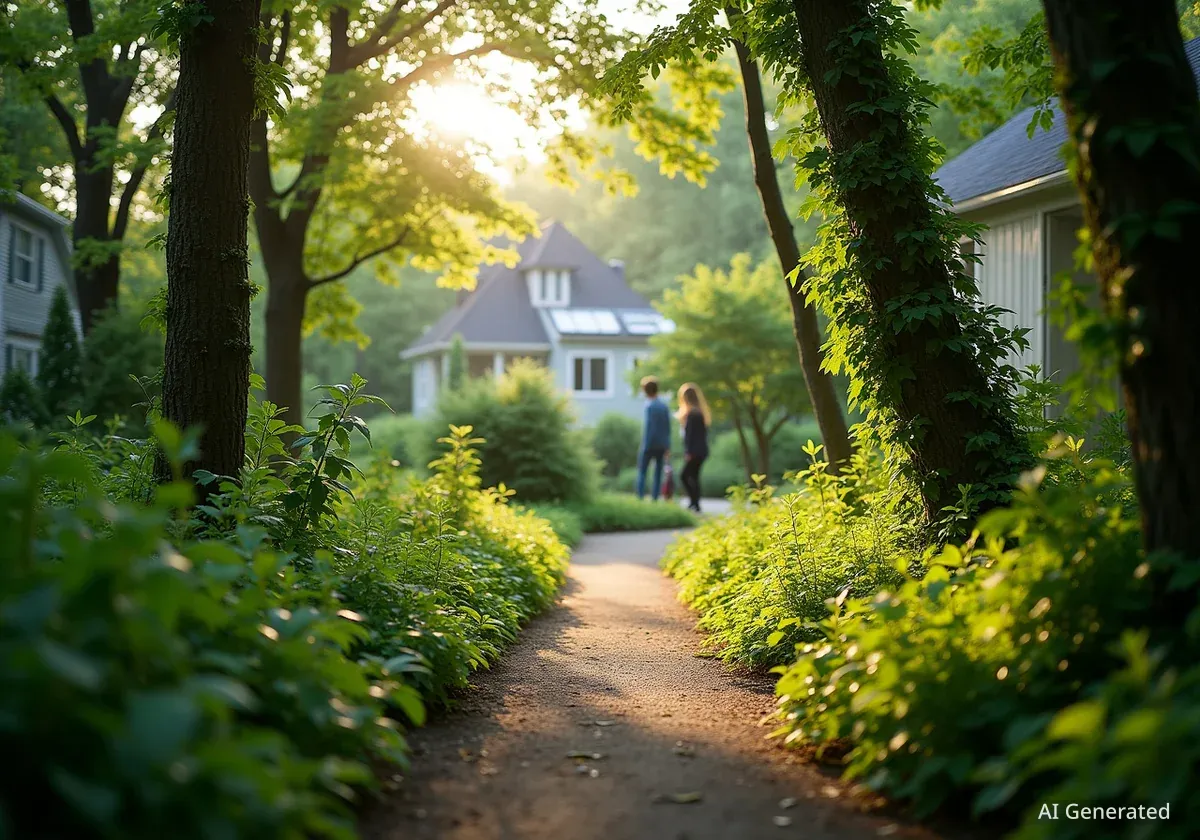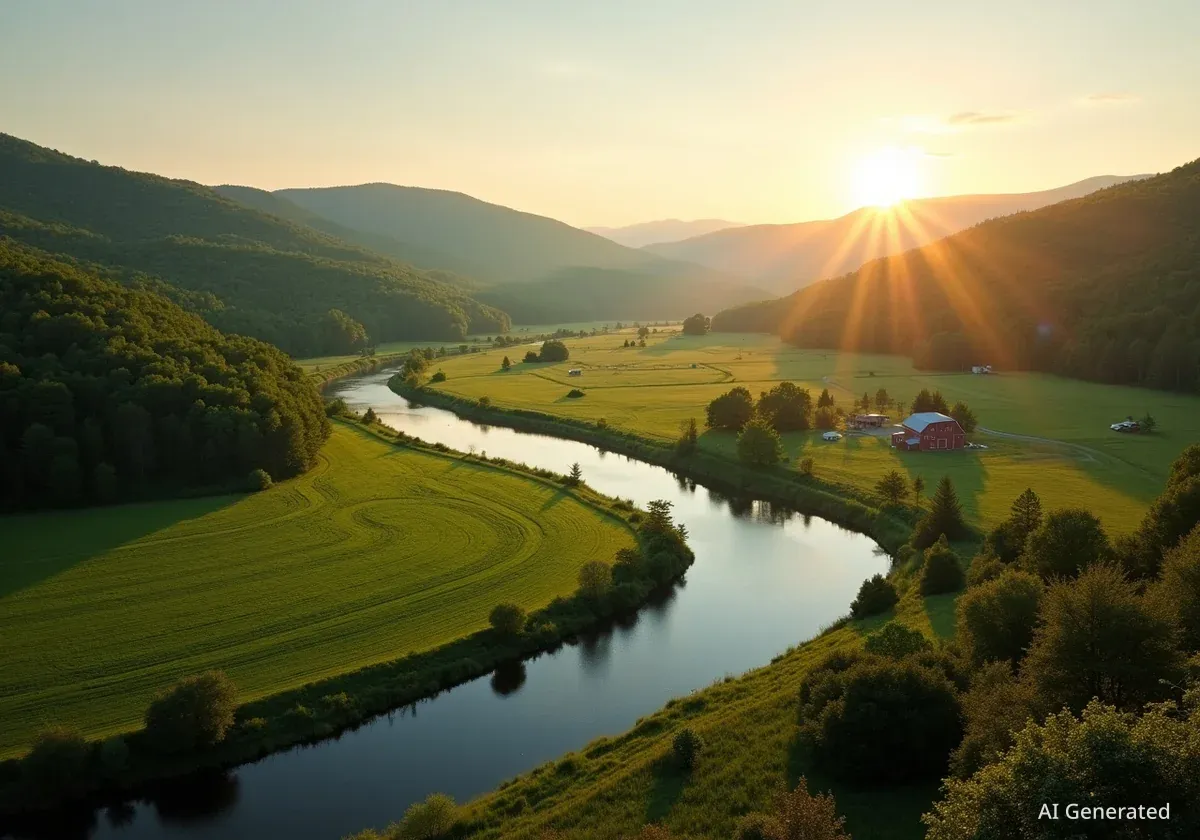A new environmental initiative in Summit, New Jersey, is demonstrating how a complete, thriving forest ecosystem can be established in a remarkably small urban area. This project is part of a growing global movement known as "Tiny Forests," which aims to bring the ecological benefits of woodlands into cities and suburbs by planting dense, fast-growing collections of native trees.
The Summit installation serves as a practical example of how limited space can be transformed into a biodiversity hotspot. These miniature forests are designed to mature in decades rather than centuries, offering a rapid solution to enhance local green infrastructure and connect communities with nature.
Key Takeaways
- A "Tiny Forest" has been planted in Summit, New Jersey, as part of a global environmental movement.
- These forests are densely planted with native species in small plots, often the size of a tennis court.
- Based on the Miyawaki method, they can grow up to 10 times faster and become 30 times denser than conventional tree plantations.
- Key benefits include boosting local biodiversity, improving air quality, reducing urban heat, and providing educational opportunities for the community.
Understanding the Tiny Forest Concept
The idea of a tiny forest is not simply planting a few trees together. It is a specific, science-based approach to reforestation designed to recreate the complexity of a natural, native woodland in a condensed space. This method was pioneered by the late Japanese botanist Dr. Akira Miyawaki and has been adopted worldwide for its efficiency and ecological impact.
The process begins with a thorough analysis of the local soil and the historical native plant community. Soil is prepared with organic materials to improve its health and water retention, creating an ideal foundation for growth. Following this, a diverse mix of native tree and shrub species is planted in very close proximity to one another.
The Miyawaki Method Explained
Dr. Akira Miyawaki's technique involves planting dozens of native species in a small area, with as many as three to five saplings per square meter. This high density encourages competition for sunlight, which forces the trees to grow upwards much faster than they would in a traditional, spaced-out planting. The result is a self-sustaining, multi-layered forest that becomes maintenance-free within about three years.
Rapid Growth and Ecological Benefits
One of the most significant advantages of a tiny forest is its accelerated growth rate. Because of the dense planting and soil preparation, these ecosystems can achieve a level of maturity in just 20 to 30 years that would take a conventionally planted forest over a century to reach. This rapid development means the environmental benefits are realized much sooner.
These benefits are extensive and address several urban challenges:
- Biodiversity Hub: By using a wide variety of native plants, tiny forests attract a rich assortment of wildlife, including birds, insects, pollinators, and small mammals, creating a vital sanctuary in urbanized landscapes.
- Climate Regulation: The dense canopy helps mitigate the urban heat island effect by providing shade and releasing water vapor through transpiration, which cools the surrounding air.
- Carbon Sequestration: Despite their small size, the high density of trees allows these forests to absorb significant amounts of carbon dioxide, contributing to cleaner air.
- Water Management: The rich, porous soil of a tiny forest acts like a sponge, absorbing rainwater and reducing stormwater runoff, which helps prevent localized flooding and filters pollutants.
The Summit Project A Local Green Initiative
In Summit, New Jersey, the tiny forest project represents a community-driven effort to enhance the local environment. While specific details of the project's partners are part of its local implementation, such initiatives typically involve collaboration between municipal governments, environmental groups, schools, and resident volunteers. The goal is to create a living laboratory and a natural asset for the town.
The site, though small, is packed with dozens of different native species that once thrived in the region. This careful selection ensures the forest is resilient and perfectly adapted to the local climate and soil conditions. It also serves as a seed bank for native flora.
By the Numbers: Tiny Forest Impact
According to research on Miyawaki-style forests, these small ecosystems can host up to 18 times more biodiversity than nearby managed parks. They also grow to become 30 times denser and absorb more carbon dioxide per square meter than monoculture tree plantations.
Community Engagement and Education
Beyond its ecological functions, the tiny forest in Summit serves an important social purpose. It acts as an outdoor classroom where students and residents can learn about native ecosystems, botany, and the importance of conservation. The planting process itself is often a community event, fostering a sense of shared ownership and pride in the local environment.
"Bringing a project like this to life connects people directly to their natural heritage," noted an advocate for urban greening. "When children help plant a tree, they become stewards of that forest for life. It's a powerful educational tool."
These green spaces also provide mental and physical health benefits. Access to nature has been proven to reduce stress and encourage physical activity. A tiny forest offers a quiet, green refuge in an otherwise built-up area, improving the quality of life for those who live and work nearby.
The Future of Urban Reforestation
The tiny forest movement is gaining momentum as cities around the world look for innovative ways to combat climate change and biodiversity loss. From Paris to Pakistan, and now in American suburbs like Summit, these miniature woodlands are proving that significant environmental change can start on a small scale.
As urban development continues, protecting and creating green spaces becomes increasingly critical. The tiny forest model provides a scalable and effective blueprint for reintroducing nature into the urban fabric. It demonstrates that every small patch of land—whether in a park, a schoolyard, or a corporate campus—holds the potential to become a vibrant, self-sustaining ecosystem.
The Summit project is more than just a collection of trees; it is a symbol of a forward-thinking approach to urban planning and environmental stewardship. It stands as a testament to the idea that with the right methods, a complete and complex forest can indeed be squeezed into a surprisingly small space, bringing immense benefits to the community and the planet.





